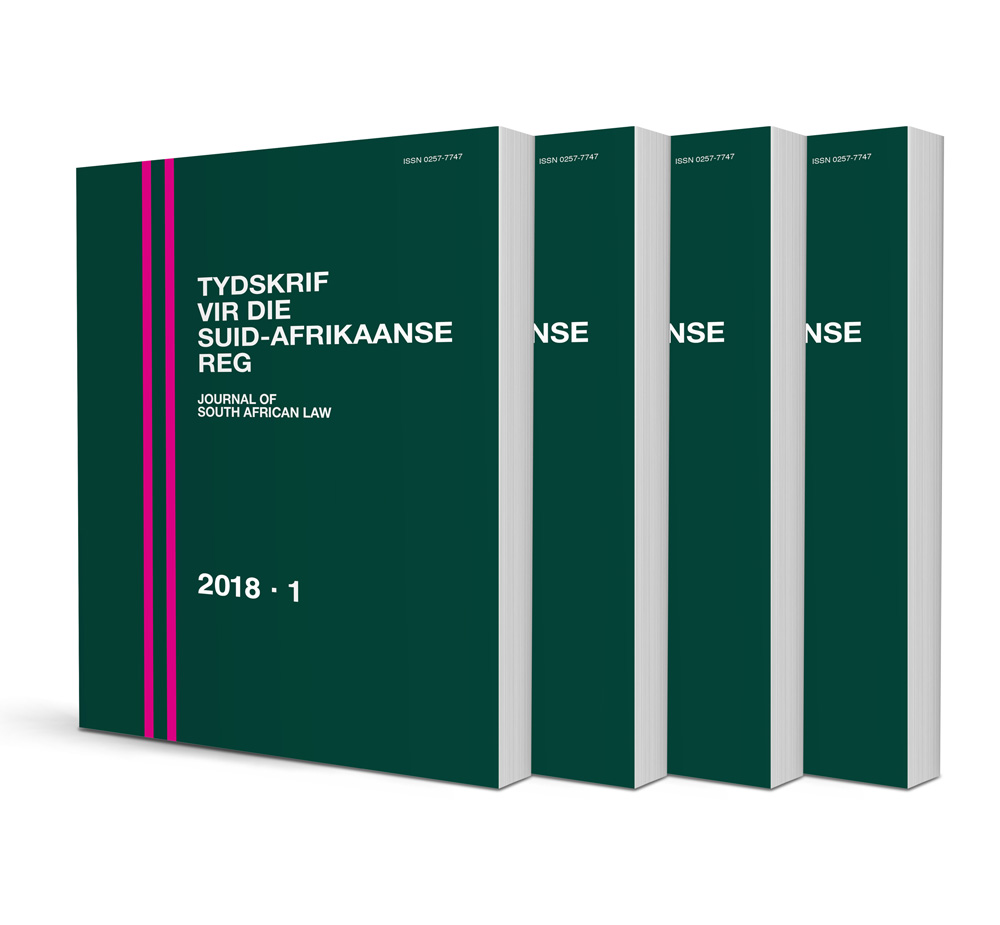
Aantekeninge: Borgstelling deur ’n skuldenaar vir eie skuld bly nietig ongeag vermeende skynverwekking en enkele ander aspekte van borgstelling
Author: JC Sonnekus:
ISSN: 1996-2207
Affiliations: Universiteit van Johannesburg
Source: Tydskrif vir die Suid-Afrikaanse Reg, Issue 3, 2022, p. 536-550
https://doi.org/10.47348/TSAR/2022/i3a8
Abstract
The deeply ingrained precedent used by many legal advisors to credit providers in South Africa in securing the claim of the latter to their debtors as legal persons with a surety agreement that binds the directors of the legal person as sureties and co-principal debtors, is of doubtful use. In reality, this agreement provides a false sense of security that does not merit the paper on which it is written. If the same legal subject is involved in both personae, a court cannot ignore the trite principle that a party cannot stand surety for itself. In the Radiant case, the original “business entity” was in reality the alter ego of M because it was not registered as any legal person; M was merely trading as Xelmar FXN. Although M signed as surety, as co-principal debtor and also as the agent representing the business, in reality, only one legal subject was involved apart from the creditor R – M. M could not have signed as surety for his own debt albeit in the name of the business as his alter ego. When a company was incorporated a year later with almost the same firm name as the original entity, R neglected to insist on the conclusion of new credit agreements and surety agreements because M had misrepresented to R that the name change of the business entity did not impact on the business arrangements already in place. Allegedly, it merely underwent a change from sole proprietor to (Pty) Ltd! According to the pleadings, the second defendant M represented to the plaintiff by words, alternatively by conduct, that the entity remained the same and that the incorporation was “as a going concern” with no inherent change to debtors and creditors. The plaintiff relied on this misrepresentation to its detriment. The court correctly held that M could not be bound as surety for the debt of the company because no surety agreement was in place regarding that liability. Notwithstanding R’s reliance on the misrepresentation to its detriment, the court held that the reliance on estoppel could not succeed because the misrepresentation could not be maintained. It was held that maintaining the misrepresentation would be in conflict with section 6 of Act 50 of 1956. It is submitted that M was still responsible for the debt of his alter ego as the original business entity because he bound himself as principal debtor. In the absence of another legal subject, M was not “co-principal debtor” but the sole debtor. By postponing to inform R of the completed change in the business entity for more than five months after the company was incorporated and registered, M misrepresented to R that no change had occurred. In these circumstances estoppel was the applicable defence, notwithstanding the court’s finding. Creditors will be better off when they refrain from using old precedents containing contradictory formulations. They should rather compel the natural persons involved with their debtors as legal persons to sign only as principal or co-principal debtors and not as sureties. It is incomprehensible why the court held that R had no claim against M in this case; he remained the sole debtor for all liabilities due to R until such time when R was informed of the change in the legal entity of the business involved. No novation or delegation of the original debts were agreed to at all.